Florence Temko - Origami Boxes: This Easy Origami Book Contains 25 Fun Projects and Origami How-To Instructions: Great for Both Kids and Adults!
Here you can read online Florence Temko - Origami Boxes: This Easy Origami Book Contains 25 Fun Projects and Origami How-To Instructions: Great for Both Kids and Adults! full text of the book (entire story) in english for free. Download pdf and epub, get meaning, cover and reviews about this ebook. year: 2012, publisher: Tuttle Publishing, genre: Children. Description of the work, (preface) as well as reviews are available. Best literature library LitArk.com created for fans of good reading and offers a wide selection of genres:
Romance novel
Science fiction
Adventure
Detective
Science
History
Home and family
Prose
Art
Politics
Computer
Non-fiction
Religion
Business
Children
Humor
Choose a favorite category and find really read worthwhile books. Enjoy immersion in the world of imagination, feel the emotions of the characters or learn something new for yourself, make an fascinating discovery.
- Book:Origami Boxes: This Easy Origami Book Contains 25 Fun Projects and Origami How-To Instructions: Great for Both Kids and Adults!
- Author:
- Publisher:Tuttle Publishing
- Genre:
- Year:2012
- Rating:5 / 5
- Favourites:Add to favourites
- Your mark:
Origami Boxes: This Easy Origami Book Contains 25 Fun Projects and Origami How-To Instructions: Great for Both Kids and Adults!: summary, description and annotation
We offer to read an annotation, description, summary or preface (depends on what the author of the book "Origami Boxes: This Easy Origami Book Contains 25 Fun Projects and Origami How-To Instructions: Great for Both Kids and Adults!" wrote himself). If you haven't found the necessary information about the book — write in the comments, we will try to find it.
Origami Boxes presents a collection of origami paper craft boxes from well-known origami author and expert Florence Temko, highlighting 24 original paper folding projects that are sure to please children and adults alike.
Origami is the ideal craft for anyone who likes to create with their hands. The paper craft projects in this book can help you express your creativity by folding wonderful containers out of single sheets of paper. Origami Boxes features designs for origami boxes that range from traditional to unique, simple to complex. Each box is explained with easy-to-follow diagrams and illustrated with a photograph of the finished project. A section on paper folding techniques makes it easy to get started, with special tips on how to adapt boxes to different sizes and papers. This easy origami book is sure to provide hours of entertainment for both children and adults.
This origami book contains:
Origami projects include:
Florence Temko: author's other books
Who wrote Origami Boxes: This Easy Origami Book Contains 25 Fun Projects and Origami How-To Instructions: Great for Both Kids and Adults!? Find out the surname, the name of the author of the book and a list of all author's works by series.

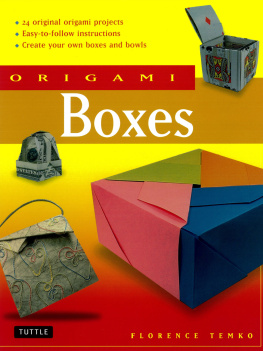

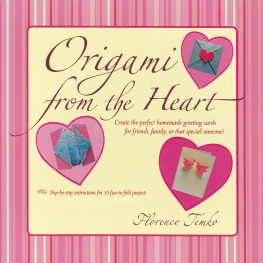

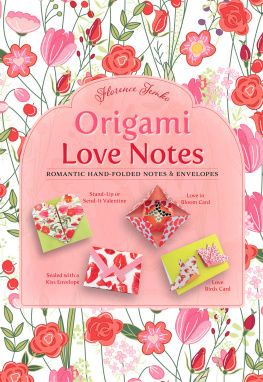
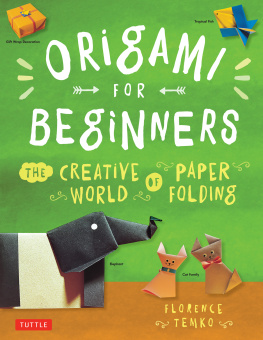
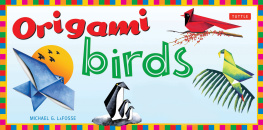

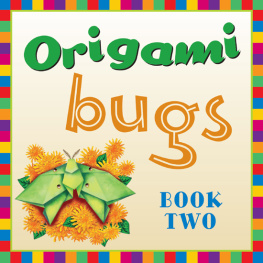
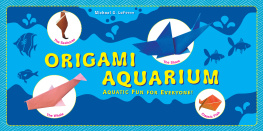
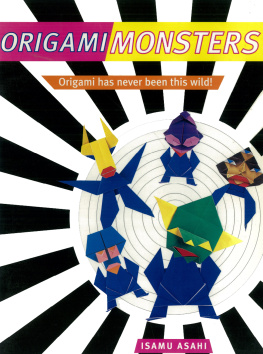
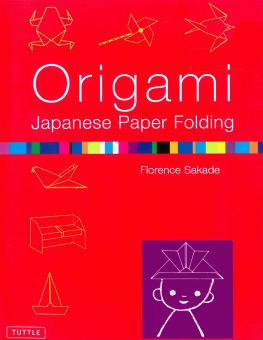
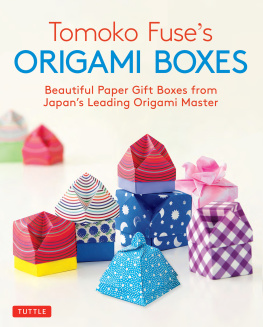
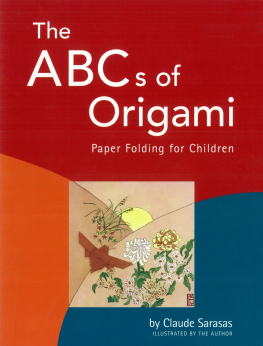


 About Origami Techniques T o help you make sense of the lines and arrows on the drawings, you should study the explanations of a few basic techniques.
About Origami Techniques T o help you make sense of the lines and arrows on the drawings, you should study the explanations of a few basic techniques.  In general, you can fold paper toward you or away from you. In origami, the forward crease is called a valley fold. In the diagrams it is shown by a line of dashes. Fold the square in half by bringing one edge of the paper toward you and matching it to the opposite edge.
In general, you can fold paper toward you or away from you. In origami, the forward crease is called a valley fold. In the diagrams it is shown by a line of dashes. Fold the square in half by bringing one edge of the paper toward you and matching it to the opposite edge.  2. Mountain Fold When you crease paper to the back, away from you, it's called a mountain fold. In the diagrams it is shown by a line of dashes and dots.
2. Mountain Fold When you crease paper to the back, away from you, it's called a mountain fold. In the diagrams it is shown by a line of dashes and dots.  You have made a mountain fold.
You have made a mountain fold.  3. Existing Crease A crease made previously is shown in the diagrams by a thin line that does not touch the edges.
3. Existing Crease A crease made previously is shown in the diagrams by a thin line that does not touch the edges.  4. Arrows In the diagrams you will see four kinds of arrow They indicate the direction in which to fold.
4. Arrows In the diagrams you will see four kinds of arrow They indicate the direction in which to fold.  Make a mountain fold.
Make a mountain fold.  Double ArrowFold and unfold the same crease.
Double ArrowFold and unfold the same crease.  Curly ArrowTurn the paper over.
Curly ArrowTurn the paper over. 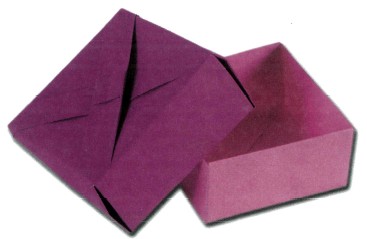 5.
5.  Fold a small square from corner to corner.
Fold a small square from corner to corner.  Place the paper exactly as shown. Fold the top corner over to the right, so that it peeks over the open edge.
Place the paper exactly as shown. Fold the top corner over to the right, so that it peeks over the open edge.  3a. 3b. 3b.
3a. 3b. 3b. Completed reverse fold. The instructions for making a reverse fold are indicated with a dash-dot-dash line, the same as for a mountain fold, but the text states that you must make a reverse fold. You may wonder why this procedure is called a "reverse" fold: In step 2 you see that the doubled paper is made up of a mountain fold on the front layer and a valley fold on the back layer. After you have pushed the corner in between the two layers of paper in step 3 you have "reversed" the valley fold into a mountain fold.
Completed reverse fold. The instructions for making a reverse fold are indicated with a dash-dot-dash line, the same as for a mountain fold, but the text states that you must make a reverse fold. You may wonder why this procedure is called a "reverse" fold: In step 2 you see that the doubled paper is made up of a mountain fold on the front layer and a valley fold on the back layer. After you have pushed the corner in between the two layers of paper in step 3 you have "reversed" the valley fold into a mountain fold. Many origami models begin with the same series of steps, which are called bases.
Many origami models begin with the same series of steps, which are called bases.  Fold a short edge to a long edge.
Fold a short edge to a long edge. 